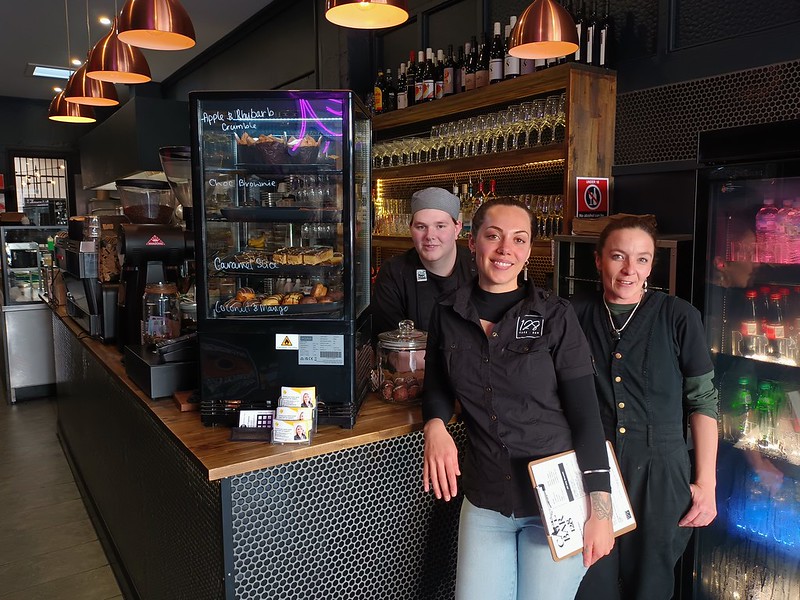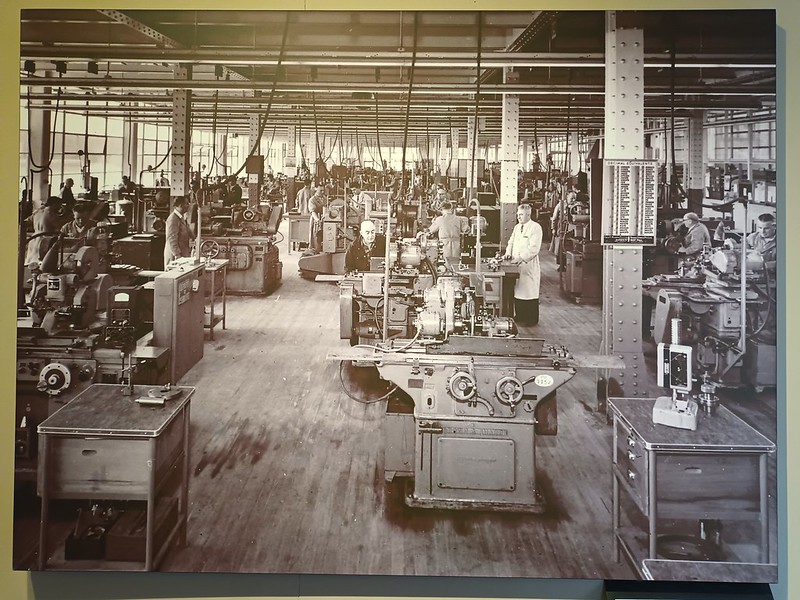 |
| Source: Stayz.com |
Lithgow is a historic former industrial town located in the Central Tablelands of New South Wales (NSW), Australia. It is located about 140 kilometres (87 miles) west of Sydney and is known for its rich history, natural beauty, and outdoor recreational opportunities.
Here's some information about visiting Lithgow:
1. History and Heritage:
Lithgow has a significant historical background, especially in terms of coal mining and industrialization. The town was established in the early 19th century and played a pivotal role in the development of the steel and iron industries in Australia. Visitors can explore this history by visiting the Lithgow Small Arms Factory Museum, Lithgow State Mine Heritage Park, and Eskbank House & Museum.
2. Natural Attractions:
Lithgow is surrounded by stunning natural landscapes, making it a great destination for outdoor enthusiasts. The area is known for its national parks, including Wollemi National Park, Gardens of Stone National Park, and Blue Mountains National Park. These parks offer opportunities for hiking, rock climbing, and enjoying breathtaking views.
5. Lake Lyell:
Lake Lyell is a popular spot for water-based activities, such as fishing, boating, kayaking, and picnicking. The lake's serene surroundings and the opportunity for various water sports make it a favorite among locals and tourists alike.
6. Zig Zag Railway:
 |
| Locomotive being readied at the Lithgow workshops for a weekend outing (R Eime) |
The Zig Zag Railway is a historic railway line that offers a nostalgic train ride through picturesque landscapes. The line features a series of zigzagging switchbacks that were designed to navigate the steep terrain. The railway has been restored and offers a unique way to experience the area's history.
Lithgow offers a range of accommodation options, including hotels, motels, bed and breakfasts, and camping sites. You'll also find a variety of very satisfactory dining options, from cafes to restaurants, where you can enjoy both local and international cuisine of a surprisingly high standard.
 |
| Aimee and her team at Cafe 128 serve up extraordinary dishes from this modest, cosy outlet in Main St (R Eime) |
8. Events and Festivals:
Lithgow hosts various events and festivals throughout the year. These may include cultural festivals, outdoor markets, and art exhibitions. It's a good idea to check the local event calendar before planning your visit.
9. Accessibility:
Lithgow is accessible by car or train from Sydney. The drive takes around 2 hours, and the train journey takes approximately 2.5 hours. Once you're in Lithgow, having a car can be beneficial for exploring the surrounding attractions.
Before you plan your visit, I recommend checking the latest information about attractions, accommodations, and any COVID-19 related guidelines that might be in place. Enjoy your trip to Lithgow!
MORE: Lithgow at Aussie Towns
What are the main visitor attractions in and around Lithgow?
Lithgow and its surrounding areas offer a variety of visitor attractions that cater to different interests. Here are some of the main attractions you can explore in and around Lithgow:
2. Zig Zag Railway: Take a ride on this historic railway line that showcases the engineering marvel of zigzag switchbacks. Enjoy a scenic journey through the picturesque landscapes of the Blue Mountains region.
 |
| Zig Zag Railway steam train on the famous viaduct after restoration. (Salty Dingo) |
3. Glow Worm Tunnel: Located within the Wollemi National Park, this abandoned railway tunnel is illuminated by thousands of glow worms, creating a magical spectacle. The tunnel is accessible by a moderate hike.
4. Lithgow State Mine Heritage Park: Explore the history of coal mining in the region through exhibits, guided tours, and hands-on experiences. The park offers insights into the life and work of miners.
5. Lake Lyell: This scenic lake provides opportunities for fishing, boating, kayaking, picnicking, and camping. The tranquil surroundings make it a great spot to relax and enjoy nature.
 |
| View from Hassan's Wall Lookout (R Eime) |
6. Hassan's Wall Lookout: Enjoy panoramic views of the surrounding landscape from Hassan's Wall, which is the highest accessible lookout in the Blue Mountains. It offers breathtaking vistas of the Hartley Valley.
7. Wollemi National Park: This expansive national park features diverse landscapes, including sandstone cliffs, deep canyons, and lush forests. It's a great place for bushwalking, rock climbing, and exploring unique geological formations.
8. Blackfellows Hand Cave: This Aboriginal rock art site features hand stencils and paintings that provide insights into the Indigenous history of the area.
9. Lithgow Small Arms Factory Museum: Learn about the history of firearm production in Australia through exhibits, artifacts, and displays showcasing the evolution of small arms manufacturing.
 |
| Small Arms Factory during wartime production (LSAFM) |
10. Eskbank House & Museum: A historic house that offers a glimpse into Lithgow's past, featuring period furnishings, gardens, and insights into the lives of early settlers.
11. Gardens of Stone National Park: This park is known for its striking rock formations, pagoda-like rock structures, and canyons. It's a popular destination for bushwalkers, photographers, and rock climbers.
12. Berghofer's Pass: This scenic drive takes you through picturesque landscapes, offering beautiful views and opportunities for birdwatching and photography.
13. Hartley Historic Site: Explore a well-preserved 19th-century village that provides insights into colonial history. The site includes historic buildings, a courthouse, and a church.
These are just a few of the many attractions you can explore in and around Lithgow. Whether you're interested in natural beauty, history, outdoor activities, or cultural experiences, there's something for everyone in this diverse region.
History of Lithgow in NSW
The history of Lithgow in New South Wales (NSW), Australia, is rich and diverse, marked by significant developments in industry, mining, transportation, and culture. Here is an overview of the key historical points in Lithgow's history:
Early Indigenous History:
Before European settlement, the area around Lithgow was inhabited by Aboriginal people from the Wiradjuri and Gundungurra nations. These Indigenous communities had a deep connection to the land, utilizing its resources for food, shelter, and cultural practices.
European Settlement and Exploration:
European exploration of the region began in the early 1800s. The town of Lithgow itself was established in the early 19th century, named after the Scottish town of Lithgow where the pioneering industrialist William Sandford was born. The early European settlers were primarily engaged in farming and grazing.
Coal Discovery and Industrialization:
One of the most significant events in Lithgow's history was the discovery of coal in the region in the 1800s. The abundance of coal led to the establishment of coal mines and the growth of the coal mining industry. This in turn facilitated the development of other industries, such as iron and steel production.
Iron and Steel Industry:
The establishment of the Lithgow Iron Works in 1875 marked a turning point in the town's history. The ironworks initially produced pig iron using local coal and iron ore. In 1907, the Lithgow Small Arms Factory was established, producing arms and ammunition for the Australian military. These industrial developments played a vital role in shaping Lithgow's identity as an industrial hub.
Transportation and Railways:
Lithgow's location and industrial growth led to the expansion of transportation networks. The construction of the Great Western Railway, including the iconic Lithgow Zig Zag Railway, facilitated the movement of goods and people between Lithgow and Sydney.
Cultural Heritage:
Lithgow's cultural heritage is closely tied to its industrial history. The town's heritage-listed buildings, such as the Lithgow State Mine Heritage Park and Eskbank House, provide insights into its past. The Lithgow Small Arms Factory Museum showcases the role of the factory in Australia's history.
World Wars and Aftermath:
During both World Wars, Lithgow's industrial facilities played a crucial role in supporting Australia's war efforts. The Lithgow Small Arms Factory produced weapons and munitions, contributing to the country's defense. After the wars, the town underwent transformations as industries diversified and technology advanced.
 |
| 3.7in Anti-Aircraft guns installed near Lithgow to guard wartime industry facilities (R Eime) |
Modern Era:
In recent decades, Lithgow has shifted from being primarily an industrial center to becoming a hub for tourism, outdoor activities, and cultural events. The natural beauty of the surrounding area, including the Blue Mountains and national parks, has attracted visitors seeking outdoor adventures and relaxation.
Today, Lithgow is known for its historical sites, natural attractions, and a blend of industrial heritage and contemporary culture. Its past as a center of industry and innovation continues to influence its identity, while the town embraces its unique position within the broader context of Australian history.
Nearby Lithgow
Wallerawang
Portland
Images as credited



